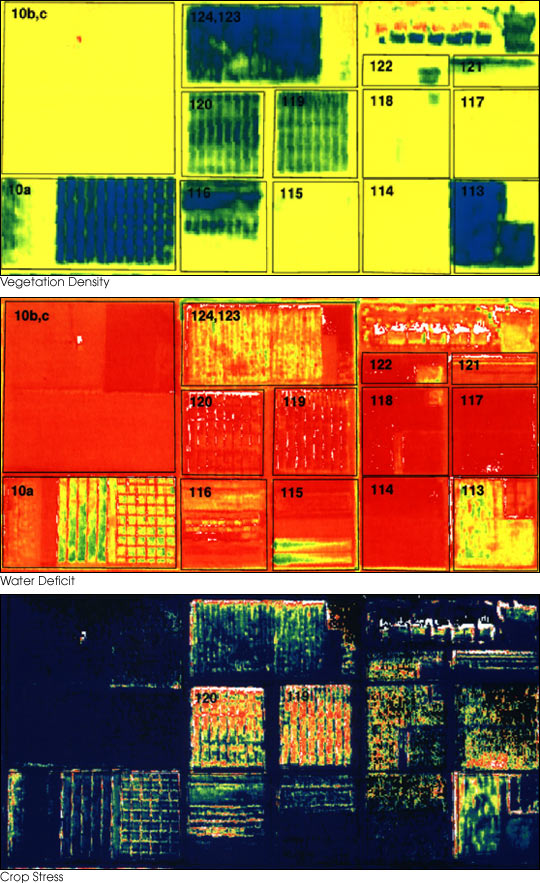


These three false-color images demonstrate some of the applications of remote sensing in precision farming. The goal of precision farming is to improve farmers’ profits and harvest yields while reducing the negative impacts of farming on the environment that come from over-application of chemicals. The images were acquired by the Daedalus sensor aboard a NASA aircraft flying over the Maricopa Agricultural Center in Arizona. The top image shows the color variations determined by crop density (also referred to as #147;Normalized Difference Vegetation Index”, or NDVI), where dark blues and greens indicate lush vegetation and reds show areas of bare soil. The middle image is a map of water deficit, derived from the Daedalus’ reflectance and temperature measurements. Greens and blues indicate wet soil and reds are dry soil. The bottom image shows where crops are under serious stress, as is particularly the case in Fields 120 and 119 (indicated by red and yellow pixels). These fields were due to be irrigated the following day.
For more information, read Precision Farming.
Images courtesy Susan Moran, Landsat 7 Science Team and USDA Agricultural Research Service.